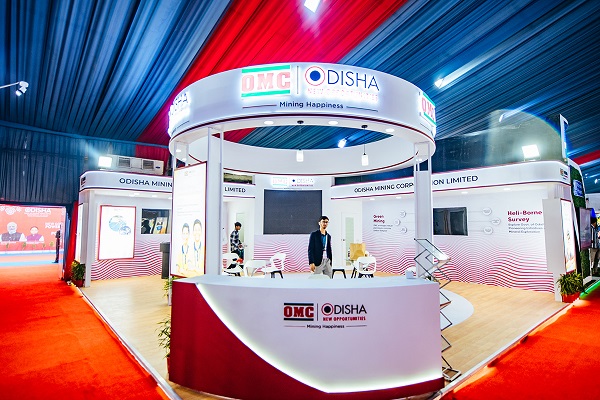.png)

Dr Hemachandra Padhan is an Assistant Professor, General Management and Economics, IIM Sambalpur.*
September 30, 2025 at 9:24 AM IST
The goods and services tax reform is more than just a fiscal adjustment. By simplifying tax slabs and reducing rates on essential goods and services, it has the potential to reshape Odisha’s economic trajectory over the next two decades. Alongside these opportunities, however, comes the formidable challenge of managing a projected revenue shortfall.
The revised GST structure introduces three slabs—5%, 18%, and 40%—with reduced rates on essentials, handlooms, and kendu leaves. These changes are expected to revive traditional industries and boost household consumption. Yet, they also raise concerns about fiscal stability, with the state facing a potential annual revenue shortfall of ₹60 billion.
|
Category |
Details |
Impact on Odisha |
|
GST-Reform Highlights |
Simplified slabs: 5%, 18%, 40% (luxury/sin goods)- Reduced rates on essentials- Lower GST on consumer goods (TVs, ACs, cement) Higher GST on luxury items |
Easier compliance for businesses- Increased affordability for consumers- Potential boost in demand for goods |
|
Positive Economic Impacts |
Handicrafts & handloom GST reduced from 12% → 5%- Kendu leaves GST reduced from 18% → 5%- Consumer goods become cheaper |
Revives local cottage industries- Boosts income for artisans & farmers- Stimulates domestic consumption |
|
Revenue Implications |
Potential shortfall > ₹60 billion annually- Elimination of higher slabs & changes in compensation mechanism |
Fiscal pressure on state budget- May require alternative revenue sources or policy adjustments |
|
Economic Forecast (FY 2024–25) |
Projected growth: 7.2% (above national average 6.5%)- Revenue surplus target: ₹318 billion (3% GSDP)- Fiscal deficit target: ₹342 billion (3.2% GSDP) |
Moderate growth expected- Need for careful fiscal management to maintain balance |
|
Strategic Responses |
Infrastructure investment: authority to collect holding tax from IDCO areas- New excise policy to enhance revenue |
Strengthens revenue collection- Supports economic development initiatives |
|
Long-term Outlook |
GST reforms simplify taxation, boost consumption, support local industries |
Odisha likely to benefit from higher demand and industrial revival- Must manage revenue gaps to sustain growth |
Balancing Growth, Fiscal Stability
The GST reform opens doors for industrial revival but also raises fiscal challenges. A widening revenue shortfall could constrain social spending, infrastructure investment, and targeted development programmes, particularly in rural and tribal areas.
Odisha’s growth is projected at 7.2% in 2024–2025—above the national average of 6.5%—a testament to its resilience despite structural challenges. The state faces a delicate balancing act: capturing new growth opportunities while containing fiscal strain. Key drivers, including tourism, IT services, renewable energy, and small-scale manufacturing, are expected to drive industrial diversification in the state. Traditional crafts may regain competitiveness, while stronger consumption will add momentum. Yet, employment generation, particularly for the youth, must remain central to the economic strategy. Climate vulnerabilities, particularly in the form of cyclones, add another layer of complexity, emphasising the need for resilience alongside innovation.
Odisha’s Role in National Ambitions
Odisha’s trajectory is pivotal in achieving the twin visions of Viksit Odisha 2036 and Viksit Bharat 2047. For this, fiscal creativity and long-term planning will be critical. The state must explore alternative revenue sources, including land monetisation, tourism levies, and green energy cesses. It must also scale up skilling programs to align the workforce with emerging sectors and make investments in climate-proof infrastructure, rural industrialisation, and digitised governance to bridge the gap between growth and inclusion. The state must also look at establishing transparent public-private partnerships and expediting project clearances to translate policy intent into tangible outcomes.
With its abundant mineral resources, renewable energy potential, and cultural assets, Odisha is well-positioned to serve as both a growth engine and a soft-power hub for India. GST reforms should be seen not only as a fiscal exercise, but also as a catalyst for inclusive, innovation-driven development.
Table 2. Forecasting the Odisha economy 2025-2036
|
Year |
Projected GST Revenue (₹ bln) |
Key Sectoral Gains |
Estimated Revenue Loss (₹ bln) |
Net Impact |
|
2025 |
720 |
Handicrafts & handloom (+15%), Consumer goods (+5%) |
62 |
Moderate gain in consumption; manageable fiscal gap |
|
2026 |
785 |
Kendu leaf products (+12%), Small manufacturing (+8%) |
60 |
Positive growth with fiscal stress easing |
|
2027 |
850 |
Tourism & hospitality (+10%), Retail (+6%) |
58 |
Balanced growth; local industries continue benefiting |
|
2028 |
920 |
IT & services (+9%), Renewable energy (+7%) |
55 |
Strong consumption-driven growth; moderate revenue loss |
|
2029 |
1,000 |
Handloom exports (+12%), FMCG (+8%) |
53 |
Accelerated industrial recovery; revenue gap narrowing |
|
2030 |
1,085 |
Infrastructure & construction (+10%), Education & health (+6%) |
50 |
Robust economic expansion; fiscal impact largely mitigated |
|
2031 |
1,170 |
Renewable energy (+10%), IT & services (+7%) |
48 |
Continued fiscal consolidation; strong sectoral growth |
|
2032 |
1,255 |
Manufacturing (+9%), Tourism & hospitality (+6%) |
46 |
Balanced expansion; manageable revenue shortfall |
|
2033 |
1,345 |
Handicrafts & exports (+11%), FMCG (+7%) |
44 |
High industrial growth; loss impact further reduced |
|
2034 |
1,440 |
Infrastructure & construction (+10%), Education (+6%) |
42 |
Strong consumption and investment-led growth |
|
2035 |
1,545 |
IT & services (+9%), Renewable energy (+8%) |
40 |
Robust fiscal position; net positive economic impact |
|
2036 |
1,655 |
Manufacturing (+10%), Tourism & hospitality (+7%) |
38 |
Peak growth; fiscal losses minimal; strong sectoral gains |
Note: GSTt=GSTt-1 ×r. where r = 1+βg is the combined gross growth factor (buoyancy × nominal GSDP growth effect)
Road Ahead
But growth alone is not enough. Fiscal prudence, along with efficient revenue collection, skill development, investment in resilient infrastructure, and inclusive industrial policies, will determine whether Odisha emerges as a model for other states. If successfully implemented, the reform could enable the state to achieve Viksit Odisha 2036 and contribute meaningfully to India’s aspiration of becoming a developed-nation by 2047.
The dual challenge of catalysing growth while managing fiscal strain will require agility, creativity, and foresight. For Odisha, the GST reform is not just about balancing the books; it is about transforming economic potential into inclusive prosperity, laying a foundation for the next generation, and showcasing the state as a vital engine in India’s journey toward Viksit Bharat.




